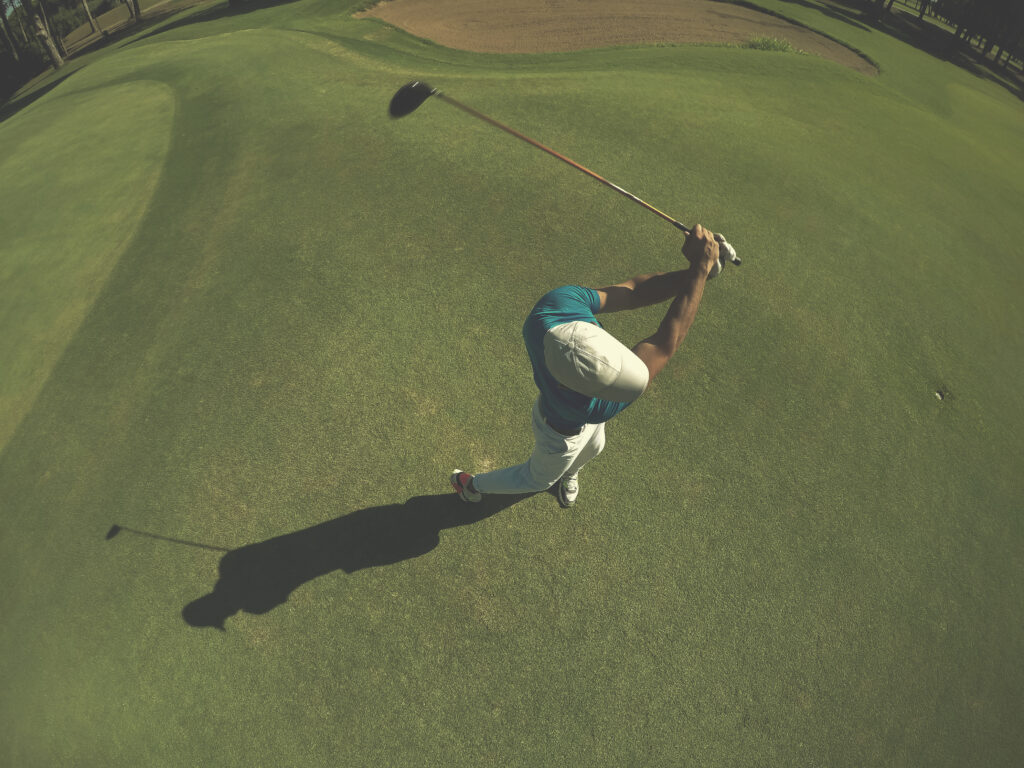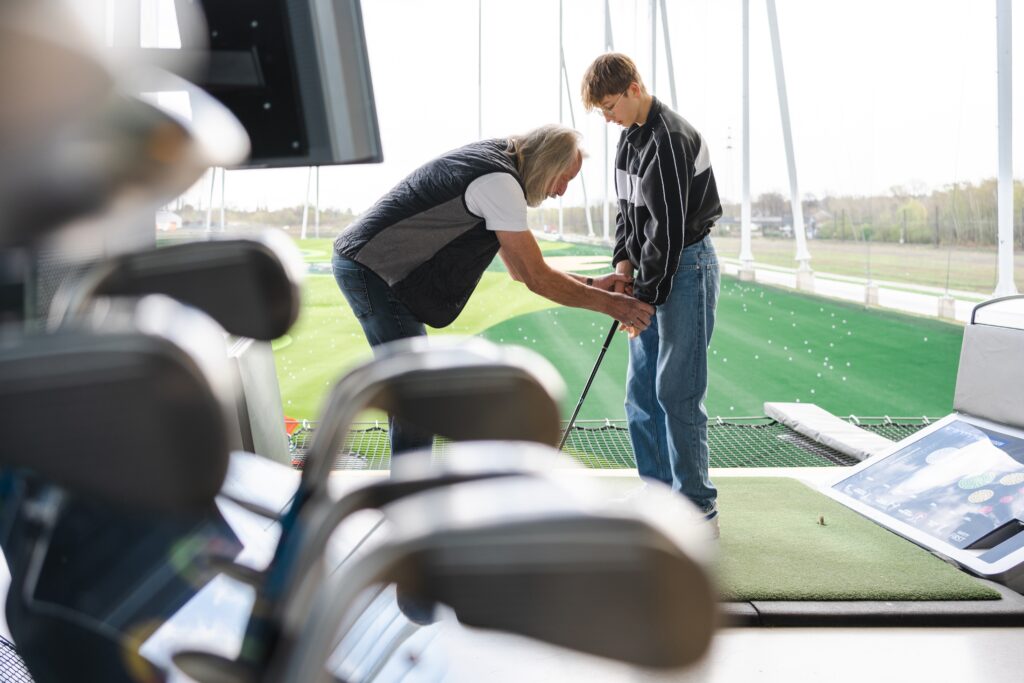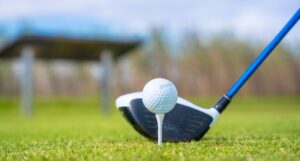The cost of golf equipment is high because manufacturers have incorporated space-age materials and techniques into their designs and expended huge amounts of money during the development and research process for each item which is why the cost of golf equipment has skyrocketed in recent years.
Yet, despite the advancements in technology and the outrageous claims made by the massive marketing campaigns promoting it, the average golfer isn’t getting significantly better. What is the best way for golf players to benefit from this rapid technological development in the last 20 years? The answer lies in just three words, golf club fitting.
Confusion, magic, mumbo-jumbo, wizardry, Voodoo… These are just a few terms that any club fitter has likely heard people use to describe what they do. If a person has a meeting with three club fitters each person could come to three wildly different conclusions according to their expertise level, preference for the brand, and options and tools available. This is only adding to the confusion!
As club designers develop and new products are developed with such a huge variety between one model and the next, it’s simple to see why golfers are unable to decide which one is the best fit for their game or if an individual fitting will improve their game in any way.
In an effort to make the whole process clearer and make it easier for a participant to comprehend the exact job a fitter is doing during a fitting session with SwingFit will give you the opportunity to work with professionals and gain an insight into golf club fitting. We hope to remove some of the mystery away from this process, and also educate players about how important it is to be fitted correctly by a knowledgeable and certified club fitting expert.
The first issue worth asking should be… what does club fitting actually mean? In simple terms, club fitting is the procedure of determining what golf club lets a player to:
- Strike the ball consistently closest to the middle of the face.
- Clubface that is square to the target line, with its sole club straight to the ground.
- Enhances the player’s performance in terms of feel, consistency, and feel
- Be aware of all design aspects of the club (swing weight, length and lie, loft and weight, shaft material, shaft flex, CG, and many more factors)
The Club Fitting Basics
Every person has their own unique golf swing and the job of a club fitter’s role isn’t to overhaul the swing but to enhance it. For each individual golf swing there are two primary elements to take into consideration:
- The strike’s centeredness on the face of the club
- A dynamic angle on the face of the club at the point of impact (raw face angle plus lie angle)
Both of these factors are connected since the dynamic angle of the face plays a major role in determining whether or not the ball hits the middle of the face and the combination of both will affect the outcome for the ball.
The Gear Effect
Contact with the center face of the golf club is vital to many aspects in ball flight. It is the primary reason for this. It ensures that the most energy is transferred onto the ball, thereby providing the most potential for distance. It also helps eliminate the “gear effect” which could result when hitting the ball away from the middle of the face. The gear effect is the tendency for the ball to spin in opposition to the club’s direction if the club is twisted at contact due to being struck in the middle of the face (think heel fades or toe hooks).
Golf Club Length
If a player’s not hitting shots in the middle on the facial area, then the first aspect to take into consideration is its length club. The length of the club could have a direct impact on where the player is most likely to strike the face. A player who is shooting low on the face as well as on the heel will usually benefit from having a club which is a bit larger, whereas players who hit shots that are too excessively high up the front or on the heel could benefit from the use of a club which is shorter. This is as simple as club fitting can get and is only one element in the overall puzzle.
The Point of Impact - Raw Face Angle
Another factor that can affect the way a ball hits the face is the dominant face-angle tendencies at the point of impact. When we talk about the “raw” face angle we are referring to that angle on the face without incorporating the lie angle or loft that has a significant impact on the overall direction that the face takes.
Closed-faced hits are more likely to move the strike pattern toward the heel. Conversely, open-faced hits can shift strike patterns toward the heel.
It is fairly easy to understand because the beginning orientation of a shot is generally due in part to the angle the face takes. So when the shot is launched, that’s where the face is pointing. Thus that if a shot is launched left (for an athlete who is right-handed) and strikes toward the toe, there is a high chance that it hit the toe as a result of an angle in the face closing.
This is due to the fact that we are striking a sphere by hitting it with a plane. Even if it is the case that the center point of the sphere aligns to the plane’s center point in the event that that plane does not lie perpendicular to the direction in which the plane is going (face perpendicular to the path) The side of the plane closest to the ball will hit the ball first.
Other Aspects to consider With the Raw Face Angle
Two aspects that may help or solve problems with face angles that are not clear could be offset and shaft deflection.
Offset
Most often, irons are the subject of offset – the greater offset that is added to the head the more the head is able to close during the impact, which results in an increased face angle. This is the desired result for a player who is more likely to keep their face open. On the other hand, this could exacerbate the issue for a player who tends to close their face too often.
Shaft Deflection
Shaft deflection refers to the tendency for the head of the shaft to be bent forward from the section that handles the shaft when viewed from the position of the face when you are on the downswing before the impact. Simply put, every shaft is at a forward deflected point at the point of impact regardless of the person who is using it and what shaft is utilized. Because of gravity, momentum and the general physics of a golf swing the shafts bend forward prior to the moment when the clubface makes contact with the ball. The extent of this forward bending has to be taken into consideration when fitting the golf club.
People who are faster and who have specific hands with certain release patterns, will make the shaft forward deflect more upon the point of impact. People who swing at slower speeds and use early release patterns without much wrist movement are likely to deflect forward this shaft less. The reason that forward deflection is important to take into account is that when the shaft moves towards the front the more face tends to close, and the greater loft can be imparted to the club due to the impact.
Certain shafts are known to have a more rigid profile towards the tip. This can be a good fit for players who have to deflect the shaft quite a bit. Different shafts can create a looser tip that can help to add some deflection.
Dynamic Angle of the Face
Although raw face angle can influence the location on the face where the ball is hit on the horizontal axis that runs through the clubface (heel or the toe) but there are additional aspects to take into consideration when looking at the exact direction of an attack. Face angle dynamic is a more thorough measurement that includes:
- Raw face angle (discussed in the previous paragraph)
- lie angle
The Lie Angle
The Lie angle refers to the flushness of the sole of the club with respect in relation to the ground time of the impact. This is a crucial aspect to take into consideration since it can have an impact on how dynamic the angle on the face as well as the capability of a player to hit the ball vertically from the middle of their club. Since the club is built with loft when the face of the club is not flat concerning the ground the face may be positioned in a way that will cause the ball to go off the ground.
There is a belief that if the heel or the club digs, it will open the face, which causes the ball to open towards the target line or vice versa, if you dig the heel. Be aware that in a well-hit shot the ball will be hit first, before the ground, and so should the ground cause any head twist because of the force of the ground the ball has already removed from the face at the time that twisting happens. The reason that a toe-dug begins open to the target line is due to it is because the loft on the surface is skewed by the angle of the face, making it appear more open and open, although the face could be squaring to the line of target. The opposite is true of an heel-dug shot. This is the reason a lie angle must be chosen for every player who is able to put only the upper part of their club straight to the ground upon impact to ensure that any error in the lie angle will not affect the feedback that a player receives regarding the direction the face.
It is worth noting it is possible that a lie angle mistake can also result in the ball being hit off-center vertically. In the event that the ball is looking to dig into the ground, any shots that is struck toward the toe will hit very high up on the surface, and any shot that is struck toward the heel would strike lower on the surface.
What is the Cause of Lie Angle Error?
Two factors that can cause the formation of a lie angle error are:
- Position of the handle at the moment of impact
- The amount of shaft that droops at the impact
The more the player lifts their handle to the club in the impact position, the higher your toe club is likely to dig. This handle mistake by altering the angle of the lie for the club.
The amount of shaft droop is how much the tip of the shaft is bent at the point of impact with the section that handles the shaft. The more the shaft is drooping the more a golfer will be able to dig into the toe of the club. The problem of shaft droop can be corrected by using an shaft that is stiffer portion of the tip.
Which Way Did it Go?
As you can observe, there are a variety of possible reasons why the shot begins either right or left of the target line. Does it have to do with the direction of the angle (open as well as closed) or due to the angle of the lie? It is the result of both factors – that is the dynamic angle of the face. For instance, if the club is closed slightly when it hits (which will result in the ball starting closing in the direction of the goal lines) while the player’s toe was digging (which will make the ball start wide open towards the lines) both of these factors could cancel each other out and the ball will start straight along the line of target. But, since the face is closed, and your toe is digging the player may be inclined to strike the ball off of his toe. This is not an impact that is of high quality.

Characteristics of Golf Club Design
We have just looked at the center of contact as well as how to adjust the face angle dynamically. There is a lot more to consider when it comes to the shape of the club that is most suitable for you.
Flex of The Golf Club Shaft
There is an agreement that the stiffness of the shaft the player must use directly correlates to the speed that they swing. The faster your swing is, the more stiff the shaft is expected to be. While this isn’t completely wrong, many other things to think about.
Swing Speed
- A faster speed usually means more rigid-flex however, this is not always the case.
Release Pattern
- The various release patterns call for different shaft flex
- A quick-release during the downswing or with a high wrist angle may need a stronger flex
- Dustin Johnson’s swing speed is more than Sergio’s, however, Dustin Johnson’s driver shaft is much lighter and more flexible.
Shaft Deflection
- The stiffness of the tip and kick point should be considered
Weight of The Golf Club Shaft
It is also vital in determining a player’s optimal performance.
- The heavier weight shafts tend to make the ball fly lower, reducing how much spin is emitted to the ball upon impact.
- Its weight on the shaft can affect how much weight is accumulated in the swing weight.
- Today’s increasing weight ranges of metal wood, driver, and iron shafts.
Material of the Golf Club Shaft
In the end, players should know that the shaft material is the best for irons. For a long time, steel and graphite were the only choices. Shaft manufacturers started to introduce composite shafts into their production just a few years ago that are a mix of steel and graphite. Which is the most suitable for you?
Graphite
- It typically produces higher ball flight and higher spin rate than steel and also leads to greater shot dispersion
- It is beneficial to players who have suffered injuries to elbows, shoulders, or wrists due to shock absorption
- New manufacturing processes are enhancing the tensile strength of graphite
Steel
- Typically, graphite produces lower ball flights and spin speeds than graphite and has a tighter dispersion of shots.
- Harsher sensation on impact
- The new designs are lighter, permitting more flex than the previous designs.
Composite Shafts
- The combination of steel and graphite theoretically offers the two of the best qualities
- Costs are higher than steel or graphite that is regular.
- Results could be different
The Adjustability of Future Golf Clubs
Adjustability seems to be in the future, and it is important to remember that any modification in the weighting or loft/face angle of a metal wood driver can have a major effect on CG and face angle that is the club. It’s true the variables start to become a bit complex and should be left to a skilled club fitter to attain the desired performance advantages.
Conclusion
I hope that the information above can provide the foundation to help you understand the myriad of factors to consider when deciding which products are most suitable for you.
There are a myriad of possibilities when it comes down to golf equipment and even if you have a basic understanding of the design of the product and the typical impact it has on performance, players must still seek advice from an experienced professional to help them make sense of the many options they have to make.
The primary goal of fitting the club to a player’s needs is to provide them with the tools they need to take pleasure in the game more and play better. At SwingFit, performance should always be your primary consideration in making these choices rather than appearance or feel, even though both should be considered. The scorecard as well as your handicap will be grateful to you for this.





























































